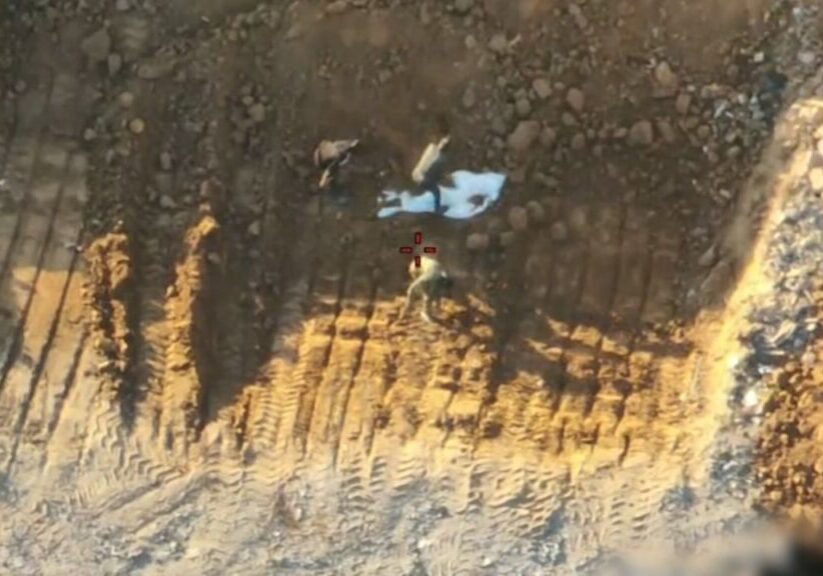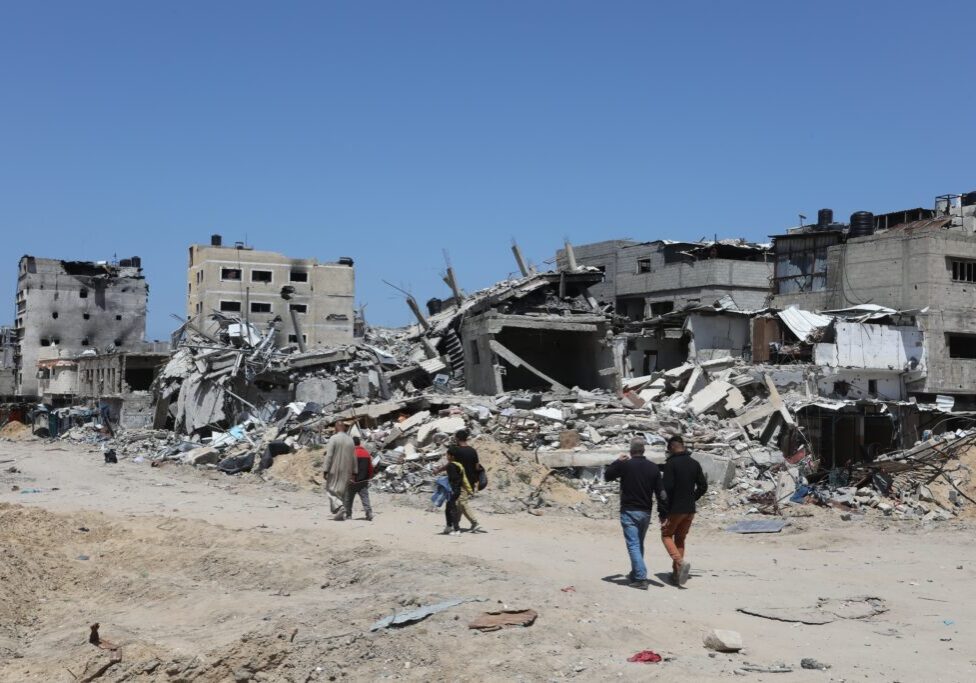Australia/Israel Review
March of Folly
May 30, 2018 | Seth Frantzman

Eight weeks. Up to 8,700 wounded and around 100 people killed. Those are the brutal numbers of the “Great March of Return” that Hamas launched in Gaza on March 30, to coincide with “Land Day”.
The protests were supposed to reach a peak on May 15, to culminate with Nakba Day, when Palestinians mark what they see as the catastrophic creation of Israel in 1948.
What did Hamas think would happen? And did it accomplish what it wanted? Many questions remain about the weeks of riots in which thousands were shot with live ammunition. The fallout from the clashes will likely continue to be felt through criticism from the international community, ramifications in the region, and lessons learned by both Hamas and the Israeli authorities.
Israel’s goals and controversies
The Israel Defence Forces said from the beginning that the riots in Gaza were planned and executed by Hamas. In late February, Israeli Defence Minister Avigdor Lieberman warned Gazans not to approach the border fence, that by doing so they were endangering their lives and being used by Hamas. Israel said it would respond aggressively and had learned its lessons from the use of civilians to mask infiltration attempts.
On March 28, IDF Chief of Staff Lt.-General. Gadi Eisenkot warned the army would use live fire and announced 100 snipers were being deployed.
After three weeks of riots, IDF spokesman Lt.-Colonel Jonathan Conricus tweeted on April 27: “This is terror, just masked. The IDF will continue to defend our people and border.”
On April 30, the High Court of Justice responded to a petition by human rights groups and held a hearing about Israel’s policy on the Gaza border.
The IDF responded that it was treating the border with Gaza the same way it does those with Syria or Lebanon but that its methods were evolving in response to each Friday’s protests.
The details of any changes between March 30 and May 15 were not made public, but the number of casualties decreased on each Friday. However, on Monday May 14, 62 Palestinians were killed, according to Hamas. Data derived from the Hamas-run Health Ministry in Gaza shows that the proportion hit with live fire also decreased, from almost half of those injured on March 30 to a low of around 6% of those injured on May 4. This would appear to indicate a more conservative use of live fire.
Israel succeeded in preventing any massive breach of the security fence. It also had to respond to flaming kites and masses of burning tyres used to screen the movements of the rioters. From a tactical point of view this seems to have been a complete success.
From a deterrence point of view it’s less clear. Hamas sustained the protests and found a ready pool of mostly young men willing to get shot protesting or even for the chance to touch the fence. From a much larger strategic perspective it’s not entirely clear if Israel succeeded as well as it might have by keeping the number of casualties lower.
What did Hamas want?
Hamas wanted to show through these protests that it was still relevant. After 13 years in charge of Gaza it has nothing to show for it. It is more isolated than ever, having lost any friends it once had in Egypt in 2013, and having lost funding from Qatar. It has little sympathy or support.
And Israel has succeeded in cutting off every threat Hamas uses. Israel stopped the Kassam rocket threat.
The tunnels were discovered and innovative methods employed against them. Egypt also cut off the tunnels to Sinai.
The blockade has harmed people’s lives in the Strip, but not succeeded in toppling Hamas.
To get around its political and terror-military problems, Hamas sought reconciliation with the Palestinian Authority (PA).
It hoped to use this as a Trojan horse to re-enter the West Bank.
But each time it has failed to create any kind of deal with Ramallah.
Last year when a deal seemed it would finally bear fruit, the PA was not able to enter the Gaza Strip. Then an assassination attempt targeted PA Prime Minister Rami Hamdallah and security chief Majid Faraj in March during their visit to Gaza.
Hamas decided that using mass protests might be a new and successful method. The problem is that, despite all the stories about “non-violent protests,” Hamas didn’t intend for them to be non-violent.
But it isn’t clear what it did intend. It didn’t use the protests as a cover for sniper fire at the IDF or for using improvised explosive devices.
Once it got the 50,000 Palestinian protesters to five points along the fence it settled in for the time being. It didn’t innovate. Palestinians have a saying that “existing is resisting” and pay lip service to the concept of “sumud” or steadfastness.
This was all Hamas could muster. It bragged about breaking through and returning to Palestinian areas from before 1948. But this never happened. Also there was no solidarity in the West Bank.
After a while, Hamas angered Egypt and was constantly afraid of Israeli retaliation.
When it was targeted in air strikes it appeared to flinch, worried that any more escalation would result in real harm to its leadership. While it was willing to sacrifice 100 mostly young men and encourage thousands of others to take a bullet and ruin their lives for its plans, it had nothing to give them besides a few scraps afterward and talk of “martyrdom.”
Its only real success was on May 14, when it got some attention from the world about the suffering in Gaza.
But even then it doesn’t seem to be able to convert that into more aid for the Strip or a diplomatic opening it would like, via Qatari contacts, to the West Bank. There are rumours that Hamas has reached out via Qatar to US envoy Jason Greenblatt. But Greenblatt’s only response has been to write in regional publications that Hamas has ruined Gaza and that Gaza should be reunited with the PA.
The regional context
Turkey expelled Israel’s Ambassador on May 14 and humiliated him at the airport when he was leaving the next day. This, and a UN Human Rights Council resolution on May 18, were the only real major political ramifications of the deaths in Gaza. Israel’s live-fire policies have also enraged critics throughout the West. The UN and voices in the EU have criticised Israel’s policies. Inside Israel, the human rights groups that urged soldiers not to fire on civilians and petitioned the courts got no relief. If the protests resume tomorrow, Israel will carry out the same policy.
The riots in Gaza do not appear to have harmed or strained relations with Egypt, Jordan or some of the Gulf states which Israel has garnered favour with in the last few years. That doesn’t mean the policies in Gaza are helpful for Israel. In general, Israel has an opportunity to work with these countries to confront Iran, and Jerusalem could actually encourage them to help send messages to Gaza or propose a change that might aid Gazans.
What comes next?
Hamas has found that it can sustain mass protests. It can use this to gain some space for itself in Gaza after years of stagnation. But it has also shown the shortcomings of these protests. The high number of Hamas activists among the casualties shows that it cannot convince most average people to die for it. The greatest victory it could show in the last weeks was that a few activists brought back some coils of barbed wire. For thousands of wounded and 100 dead, that’s not much.
Seth Frantzman is the Jerusalem Post’s op-ed editor and a writing fellow at the Middle East Forum. © Jerusalem Post (www.jpost.com), reprinted by permission, all rights reserved.
Tags: Hamas






